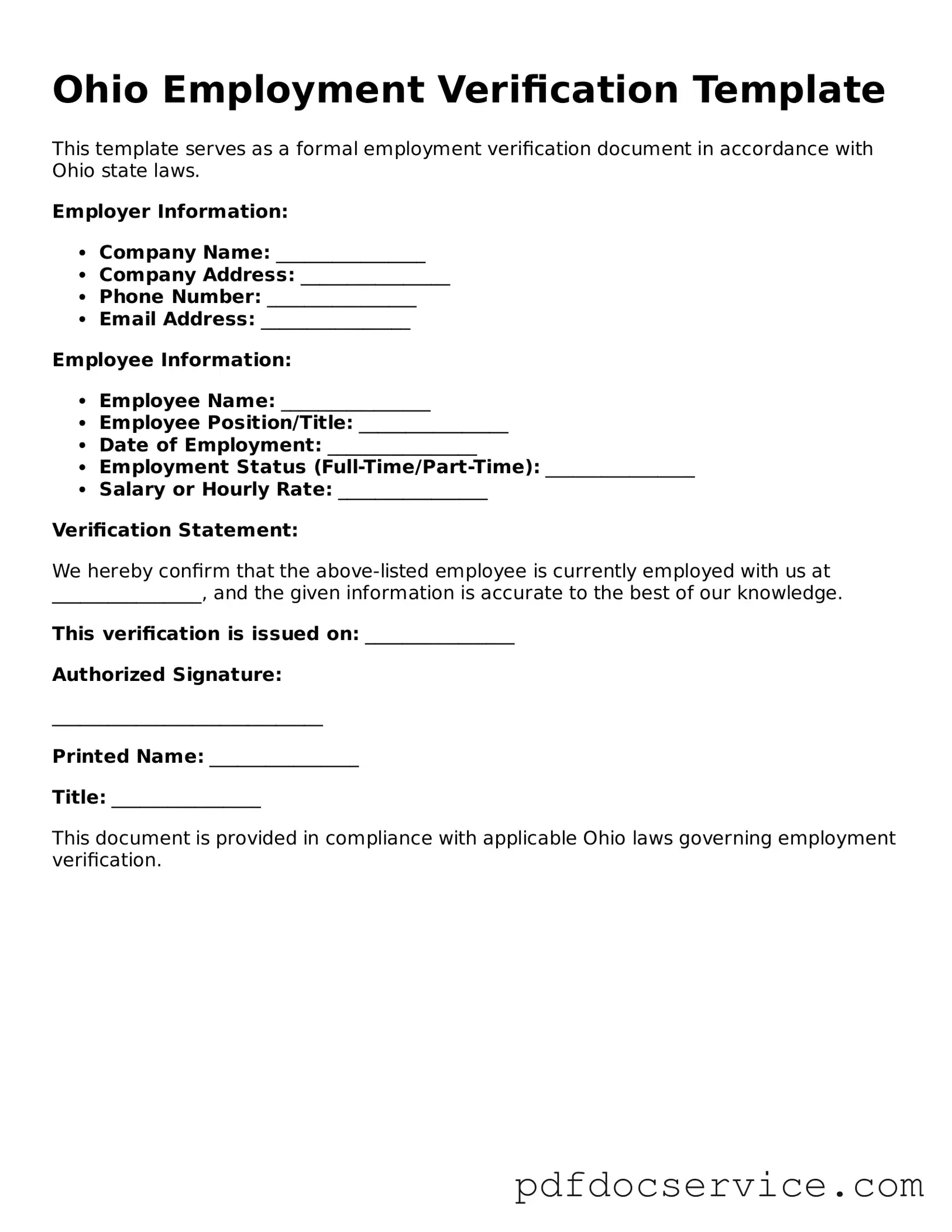The Ohio Employment Verification form is a document used by employers to confirm the employment status of an individual. This form is often required for various purposes, including loan applications, rental agreements, and background checks. It provides essential information about the employee's job title, duration of employment, and salary details.
Typically, the form is filled out by employers or human resources personnel. However, employees may also request this form to provide proof of employment for various applications. It's important for both parties to ensure that the information is accurate and up-to-date.
The form generally includes the following details:
-
Employee's full name
-
Job title
-
Start date of employment
-
End date of employment (if applicable)
-
Current salary or hourly wage
-
Employer's contact information
Employers may also include additional notes or comments as needed.
Employers can create their own version of the Employment Verification form or use a template available online. Employees can request this form directly from their employer’s HR department. It’s advisable to ask for it in writing to ensure clarity and prompt processing.
Is there a fee for the Employment Verification process?
Generally, there is no fee associated with completing the Ohio Employment Verification form. However, some employers may charge for additional services related to employment verification, such as background checks or processing fees. Always check with your employer for specific policies.
The processing time can vary based on the employer's policies and workload. Typically, it can take anywhere from a few days to a couple of weeks. If you need the verification urgently, it's best to communicate that to your employer to expedite the process.
Yes, the Ohio Employment Verification form can be used for various purposes, including:
-
Applying for loans
-
Renting an apartment
-
Obtaining a mortgage
-
Background checks for new employment
Always ensure that the form is filled out accurately to meet the specific requirements of each situation.
If you notice any errors on the form, it is important to address them immediately. Contact your employer or HR department to request corrections. Provide any necessary documentation to support your claim. Timely communication can help prevent delays in your application processes.
Yes, privacy is a key consideration. The form contains sensitive personal information, so it should be handled with care. Employers should ensure that the form is shared only with authorized parties. Employees should also be cautious about how and where they submit this information.
